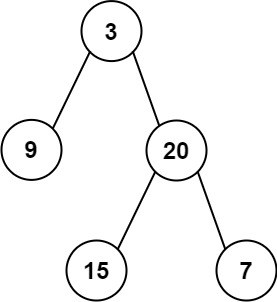404.sum-of-left-leaves
Statement
Metadata
- Link: 左叶子之和
- Difficulty: Easy
- Tag:
树深度优先搜索广度优先搜索二叉树
给定二叉树的根节点 root ,返回所有左叶子之和。
示例 1:

输入: root = [3,9,20,null,null,15,7]
输出: 24
解释: 在这个二叉树中,有两个左叶子,分别是 9 和 15,所以返回 24
示例 2:
输入: root = [1]
输出: 0
提示:
- 节点数在
[1, 1000]范围内 -1000 <= Node.val <= 1000
Metadata
- Link: Sum of Left Leaves
- Difficulty: Easy
- Tag:
TreeDepth-First SearchBreadth-First SearchBinary Tree
Given the root of a binary tree, return the sum of all left leaves.
A leaf is a node with no children. A left leaf is a leaf that is the left child of another node.
Example 1:

Input: root = [3,9,20,null,null,15,7]
Output: 24
Explanation: There are two left leaves in the binary tree, with values 9 and 15 respectively.
Example 2:
Input: root = [1]
Output: 0
Constraints:
- The number of nodes in the tree is in the range
[1, 1000]. -1000 <= Node.val <= 1000
Solution
# Definition for a binary tree node.
# class TreeNode:
# def __init__(self, val=0, left=None, right=None):
# self.val = val
# self.left = left
# self.right = right
from typing import Optional
class Solution:
def __init__(self):
self.res = 0
def dfs(self, root: Optional[TreeNode], is_left: bool) -> None:
if not root:
return
son = 0
if root.left:
son += 1
self.dfs(root.left, True)
if root.right:
son += 1
self.dfs(root.right, False)
if son == 0 and is_left:
self.res += root.val
def sumOfLeftLeaves(self, root: Optional[TreeNode]) -> int:
self.dfs(root, False)
return self.res
最后更新: October 11, 2023